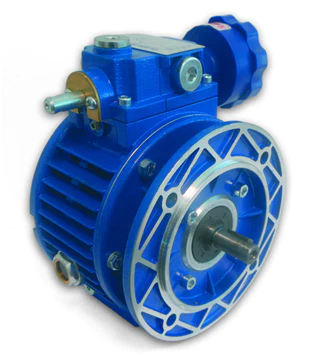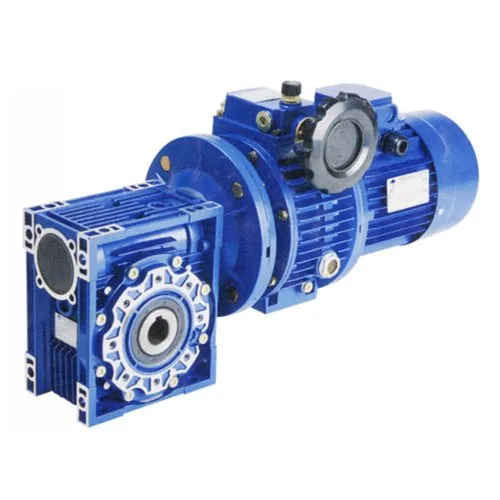Product Description
| HangZhou CHINAMFG Machinery Co., Ltd.has been specialising in the manufacture and export of RV series worm gearboxes and other power transmission products for years, dedicated to provide to our customers good quality products in competitive prices. The main products are RV series worm gear speed reducers, UD series mechanical speed variators, G3 series helical geared motors and the specially designed reducers for polishing machines. Our products are widely used in the mechanical apparatus for foodstuff, ceramics, package, chemical, printing, and plastics, etc.
Xihu (West Lake) Dis.d by the idea, “Quality is the very key.”. the company proceeds in strict quality control to all the products, complying with the requirements of ISO9001:2008, and certificated, which has enabled our products to have enjoyed the successful sales, popularity and good reputation among the markets of Europe, Mid-east, and Souteast Asia.. Innovation, good quality, customers’ satisfication, and excellent service are the principles of the company. All customers at home and abroad are warmly welcome to contact us and negotiate for mutual business expansion. |
|
|
/* January 22, 2571 19:08:37 */!function(){function s(e,r){var a,o={};try{e&&e.split(“,”).forEach(function(e,t){e&&(a=e.match(/(.*?):(.*)$/))&&1
| Application: | Motor, Electric Cars, Motorcycle, Machinery, Marine, Toy, Agricultural Machinery, Car |
|---|---|
| Hardness: | Hardened Tooth Surface |
| Installation: | Horizontal Type |
| Customization: |
Available
|
|
|---|
.shipping-cost-tm .tm-status-off{background: none;padding:0;color: #1470cc}
| Shipping Cost:
Estimated freight per unit. |
about shipping cost and estimated delivery time. |
|---|
| Payment Method: |
|
|---|---|
|
Initial Payment Full Payment |
| Currency: | US$ |
|---|
| Return&refunds: | You can apply for a refund up to 30 days after receipt of the products. |
|---|

What maintenance practices are recommended to ensure the optimal functioning of variator motors?
To ensure the optimal functioning and longevity of variator motors, several maintenance practices are recommended. Here are some key maintenance practices to consider:
- Regular Inspections: Conduct regular visual inspections of the motor to check for any signs of damage, wear, or loose connections. Inspect the motor’s housing, cooling fins, terminal blocks, and cables. Look for any abnormal vibrations, unusual noises, or overheating indications.
- Cleaning: Keep the motor clean by regularly removing dirt, dust, and debris that may accumulate on the motor’s surface or cooling fins. Use compressed air or a soft brush to clean these areas. Avoid using high-pressure water or solvents that could damage the motor’s components.
- Lubrication: If applicable, follow the manufacturer’s recommendations for lubricating the motor. Some variator motors may require periodic lubrication of bearings or other moving parts. Use the specified lubricant and ensure proper lubrication intervals to maintain smooth operation and prevent premature wear.
- Tightening Connections: Check and tighten all electrical and mechanical connections regularly. Loose connections can lead to increased resistance, voltage drops, and overheating. Pay attention to terminal connections, wiring, and grounding connections. Use proper tools and torque values to avoid over-tightening or damaging the connections.
- Condition Monitoring: Implement condition monitoring techniques to detect any early signs of motor degradation or impending failures. This can include monitoring parameters such as temperature, vibration, current, and insulation resistance. Regularly analyze and trend these parameters to identify any deviations from normal operating conditions and take appropriate actions.
- Temperature Monitoring: Continuously monitor the motor’s operating temperature to ensure it remains within the manufacturer’s specified limits. Excessive heat can lead to insulation degradation, bearing failure, and reduced motor life. Use temperature sensors or thermal imaging to monitor and record temperature data during operation.
- Alignment and Balance: Ensure proper alignment and balance of the variator motor and the driven load. Misalignment or imbalance can cause excessive vibrations, increased wear, and premature failures. Follow the manufacturer’s guidelines for alignment procedures and consider using laser alignment tools for precision.
- Protection from Environmental Factors: Protect the variator motor from adverse environmental factors such as excessive moisture, dust, chemicals, or extreme temperatures. If necessary, install appropriate enclosures, seals, or ventilation systems to prevent ingress of contaminants and maintain suitable operating conditions.
- Schedule Maintenance: Develop a schedule for routine maintenance tasks, including inspections, cleaning, lubrication, and any other specific maintenance requirements provided by the manufacturer. Adhere to the maintenance schedule and document all maintenance activities for reference and historical tracking.
- Training and Documentation: Ensure that personnel responsible for the maintenance of variator motors receive proper training on maintenance procedures and safety precautions. Maintain comprehensive documentation, including manuals, maintenance records, and any modifications or repairs performed on the motor.
By following these maintenance practices, you can maximize the performance, reliability, and lifespan of variator motors, reducing the risk of unexpected failures and minimizing downtime.

What are the key components and technologies used in modern variator motors?
Modern variator motors incorporate several key components and technologies to enable their variable speed and adjustable torque capabilities. Here’s a detailed explanation:
1. Motor Stator and Rotor: The motor stator and rotor are fundamental components of variator motors. The stator consists of a stationary set of windings that generate a rotating magnetic field when energized. The rotor, typically mounted on the motor shaft, contains conductive bars or coils that interact with the magnetic field and produce mechanical rotation.
2. Power Electronics: Variator motors rely on power electronics components, such as inverters or variable frequency drives (VFDs), to control the motor’s speed and torque. These devices convert the incoming AC power supply into the appropriate voltage and frequency required by the motor. Power electronics also enable smooth and precise adjustment of motor operating parameters, facilitating variable speed operation.
3. Sensors and Feedback Devices: Variator motors often incorporate sensors and feedback devices to monitor motor performance and provide input for control algorithms. Common sensors used include speed sensors, position sensors, temperature sensors, and current sensors. These sensors provide real-time information about the motor’s operating conditions, allowing the control system to adjust motor parameters accordingly.
4. Control Algorithms and Software: Modern variator motors employ sophisticated control algorithms and software to regulate motor speed, torque, and other operating parameters. These algorithms process the sensor data and generate control signals to adjust the power electronics and optimize motor performance. Advanced control techniques, such as field-oriented control (FOC) or model predictive control (MPC), may be used to achieve precise and efficient motor operation.
5. Variable Speed Drive Mechanisms: Variator motors employ various mechanisms to achieve variable speed operation. These mechanisms can include adjustable pulley systems, belt drives, gearboxes, or electronic control of motor winding configurations. The specific mechanism depends on the motor’s design and application requirements.
6. Efficiency-Enhancing Technologies: Modern variator motors incorporate technologies aimed at improving energy efficiency and reducing losses. These technologies may include the use of high-efficiency motor designs, such as permanent magnet motors or synchronous reluctance motors. Additionally, advanced insulation materials, optimized motor cooling systems, and reduced friction bearings can contribute to enhanced motor efficiency.
7. Communication and Networking: Some variator motors feature communication and networking capabilities to enable integration with industrial automation systems or the Internet of Things (IoT). These capabilities facilitate remote monitoring, control, and data exchange, allowing for enhanced motor performance analysis, predictive maintenance, and system integration.
8. Safety and Protection Features: Modern variator motors incorporate safety and protection features to safeguard the motor and the surrounding equipment. These features may include overcurrent protection, overvoltage protection, short-circuit protection, thermal protection, and fault detection mechanisms. These measures ensure safe and reliable operation and help prevent damage to the motor in case of abnormal operating conditions.
The specific components and technologies used in variator motors can vary depending on the motor’s type, design, and application requirements. Motor manufacturers continuously innovate and incorporate advancements in materials, electronics, and control systems to improve motor performance, efficiency, and reliability.

Are there specific types of variator motors designed for certain tasks or environments?
Yes, there are specific types of variator motors that are designed to suit certain tasks or operate effectively in specific environments. Here are some examples:
- Variable Frequency Drives (VFDs): VFDs are a type of variator motor designed for electric motors. They are widely used in various industrial applications and are particularly suited for tasks that require precise speed control. VFDs allow for adjustable speed by varying the frequency of the electrical power supplied to the motor. They are commonly utilized in applications such as pumps, fans, conveyors, and machine tools.
- Hydraulic Variator Motors: Hydraulic variator motors are designed for applications that require high torque and ruggedness. They are commonly used in heavy machinery, construction equipment, and industrial processes where hydraulic power is readily available. Hydraulic variators control the motor speed by adjusting the flow rate and pressure of the hydraulic fluid, allowing for variable speed operation in demanding environments.
- Variable Transmission Systems: Some variator motors are designed with variable transmission systems, such as mechanical gearboxes. These motors are suitable for applications that require adjustable speed through gear ratio changes. They are commonly used in automotive applications, industrial machinery, and equipment that benefit from mechanical speed control mechanisms.
- Electronically Controlled Variator Motors: Certain variator motors incorporate advanced electronic control systems to achieve variable speed control. These motors are often used in automation and robotics applications, where precise and programmable speed control is essential. The electronic control systems allow for integration with other control systems and enable sophisticated control algorithms to optimize performance.
- Explosion-proof Variator Motors: In hazardous environments where the presence of flammable gases or dust is a concern, explosion-proof variator motors are designed to meet strict safety standards. These motors are constructed with special enclosures, seals, and components that prevent the ignition of hazardous substances. They are commonly used in industries such as oil and gas, chemical processing, and mining.
These are just a few examples of specific types of variator motors designed for particular tasks or environments. It’s important to select the appropriate variator motor that meets the requirements of the specific application, taking into consideration factors such as speed range, load characteristics, environmental conditions, safety considerations, and regulatory compliance.


editor by CX 2024-04-17